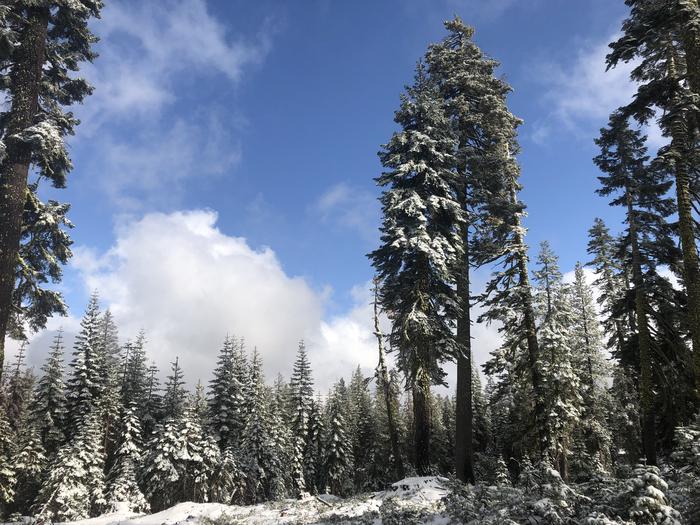Seasonal Tree Permit
Tahoe National Forest Christmas Tree Permits
This permit allows you to cut a Christmas Tree within designated areas of the Tahoe National Forest! Lifelong memories are built during these special times! We are happy to help with any information gathering you'll need to make this trip a safe and enjoyable one.
These permits are specific to ranger districts within the Tahoe National Forest. Please ensure you select the correct area for where you plan to cut your tree. If you need help with the names and boundaries of the Ranger District, please call the District or Supervisors Office.
Fees and Season Dates
Need to Know
Where to Cut Your Tree
Maps for the Ranger Districts and cutting areas can be found in the map section below.
Permit holders are reminded to respect private property by not trespassing when entering or leaving designated National Forest cutting areas.
Permit holders should keep vehicles on National Forest System roads and are reminded to park safely off the roadway in legal areas. No off-road travel is allowed.
The cutting area maps have changed for 2024 - please review the maps closely.
Selecting Your Tree
The forest has a limitation on the size of the tree you can cut and the species of trees that are permitted. See below to help you measure and choose a tree that meets your permit's guidelines.
Tree Height: 20 feet maximum
Stump height: 12 inches maximum
Stump diameter: 6 inches maximum
Do not cut isolated trees growing in the open.
Permit holders may choose from varieties of pine, fir or cedar, in designated cutting areas, and must abide by specific permit conditions for proper and responsible collection.
In addition to the traditional experience, the permitted collection of smaller diameter trees, with a trunk of six inches in diameter or less, from selected areas contributes to the reduction of over-growth, particularly among firs, which are also the most sought after varieties for the holidays.
Take the whole tree. Do not remove the top of the tree; cut down the entire tree
If snow is on the ground, remove it from around the stump so you can accurately measure the stump and tree height.
Maps
Planning Your Trip
How to Plan Your Trip
Before you leave home, be sure to measure the space where you plan to place the tree in your home (height and width), and measure the space in your vehicle where you will be transporting the tree.
Cell service may be spotty or unavailable. Be sure someone knows where you are and when to expect you back. Check the latest weather conditions, forest warnings and road closures before you leave on your trip. Bring a map with you. Don’t rely on GPS because it may not be up-to-date with forest service roads. Dress warmly and take extra dry clothes. Expect winter weather, including cold temperatures, snow and winds. Bring plenty of food and water with you as well as an overnight survival kit in case you become stranded. Start your day early. Be sure to find your tree and leave the woods before dark.
Roads may not be plowed. Carry tire chains, shovel(s) and a tow chain. Be sure your vehicle has a full tank of gas. Bring a spare key and give it to someone else in your party. Don’t get locked out of your car! Park in areas so that traffic can get by safely, and do not block gates.
We don't recommend bringing your pets but, if you do, they must be on a leash.
Helpful Cutting Tips
Carry your tree carefully out of the woods. Dragging the tree will rub off needles and bark.
If the tree is too big to transport inside of your vehicle, wrap it in canvas to prevent wind damage.
Once home, cut the bottom of the trunk off and place the freshly cut trunk in a bucket of water. Replenish water.
If storing your tree outside for a few days before putting it in the house, keep it in an area protected from the wind, such as the north or east side of your house or under a shaded tree.
Tools you might want to consider bringing with you include a measuring tape to ensure you select a tree that fits in your home; handsaw to cut your tree; gloves to protect your hands; boots to protect your feet; a tarp to sit on and/or to move your tree once it's cut; and rope or straps to secure your tree to your vehicle.
Choose a tree from a dense forested area, which will give the remaining trees more space to grow.
Cut the leftover branches from the stump and scatter them.

